On This Day…March 27th
Beautiful colourised photo of an Me 262 A-1a photographed just off the Frankfurt autobahn on Match 27th, 1945.
As you can see, the Jumo engines and cowling shave been removed and there are live 30 mil shells scattered around the area. The aircraft belonged to Kampfgeschwader(J) 54. Love the glee on the GI’s face...”souvenirs!”
Perfect ‘diorama bait”...
A port side view of the USS Bunker Hill (CV-17] while at sea off the Palau Islands on 27th March, 1944. She is seen here in the seldom used Measure 32 (Design 6A) camouflage scheme. Onlly two carriers were painted this way, the other being the USS Franklin, highlighted on a recent OTD post.
The March across the Rhine into Germany gathers pace. On March 27th, soldiers of the 87th Division (US Third Army) roll across a pontoon bridge during drive on Berlin. Boppard, Germany.
M3A1 half-track armored vehicle belonging to the 9th U.S. Armored Division in the streets of Engers, Germany, on March 27th, 1945. Note the Ma Deuce (M2”} heavy machine gun on the half truck.
Men of the American 7th Army pour through a breach in the Siegfried Line defenses on their way to Karlsruhe, Germany on March 27, 1945.
On March 27th, 1938, this Dornier Do-18/W set out from Devon, England and set a world seaplane distance record by flying non-stop to Caravelas in Brazil. A distance of 5,200 miles.
M7 self-propelled artillery vehicle in North Africa, 27th March, 1943.
The 105-millimeter Howitzer M7 self-propelled artillery vehicles were built on the M3 Lee medium tank chassis; experience informing that ground operations required adequate firepower (hence the howitzer) from fully-tracked vehicles in addition to tanks.
The superstructure was open-topped to allow fitting with the large-caliber howitzers. The later designs, the M7B1 variant, used a Sherman as a platform and was the standard design by January, 1945.
Nice aerial view of German light cruiser Karlsruhe underway off San Diego, California, United States, 27th March, 1934; of note is the off-centerline positioning of the aft turrets.
On March 27th 1944, 21 aircraft from the 388th Bomb Group set off from Knettishall Airfield, England, on a morning raid on the airfields, port and factories of Bordeaux in France. They were part of a wing of more than 550 B-17's that set out that day and ‘Big Red’ flew in the high 'A' group at 20,900ft.
While over France’s west coast airman’s worst nightmare took place - a fire started with flames raging out of the Top Turret motor and spreading rapidly through the cockpit and surrounding area. The fire reached the oxygen system and a huge explosion was imminent. ‘Big Red’ left the formation, a red warning flare was fired, and the burning Fortress made a complete circle above the town of Aizenay, trailing smoke and flames, before finally going into a steep dive.
At 15,000 ft Pilot Julius Lederman somehow managed to level the plane and gave the order to bail. John Luzell, John Carroll, Herman Hermanson, Waite Law and Julius Lederman bailed out of the nose escape hatch.
There was an explosion and Big Red broke into three pieces before hitting the ground. One man, possibly tail gunner George Hewitt jumped without a parachute just as the central section of Big Red was about to hit the ground. He broke his spine in the fall and the Germans put him in a van to take him to hospital. He never arrived, having probably died on the way.
Pilot : Julius Lederman
Co-Pilot : Waite Deeds Law
Navigator : John Joseph Carroll
Bombardier : John Nunez Luzell
Radio : Blair Harper Harman
Top Turret Gunner: Herman Frank Hermanson
Ball Turret Gunner : Louis Mizera
Waist Gunner Right : Joseph James Kapec
Waist Gunner Left : George Melroy Schwarzkopf
Tail Gunner : George William Hewett
Felix Sauer, of JG 53, developed engine problems after a dogfight with a Hurricane over Malta on March, 1942 and had to belly land on the beach at Donnalucata in Sicily. Dr. Felix Sauer was later shot down by Spitfires on 16 May, 1942 off Pozzallo, Malta in his Bf 109F-4 ‘White 6’ and rescued by an Italian torpedo boat after bailing safely.
‘White 3’ (below) was written off due to salt water corrosion.
His one known victory, his 1st, was a Blenheim on 28 August, 1941 during the Battle of Britain flying in 3/JG-53 in ‘yellow 12’.
Sauer died 4 July, 1999.
Lastly today, another entry of ‘servicemen and their dogs’. This is ‘little Joe’ - the mascot of the Army’s 26th Division, next to his GI friend on March 27th, 1945, Ottweiler, Germany.
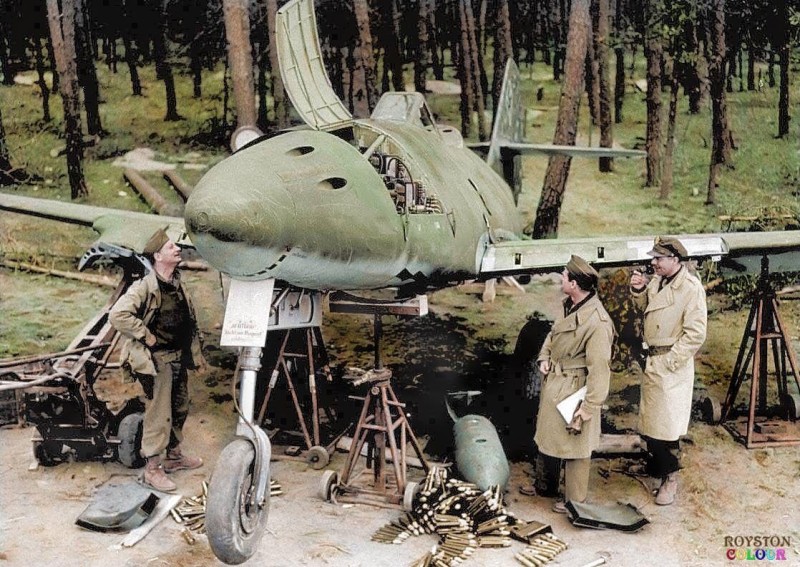
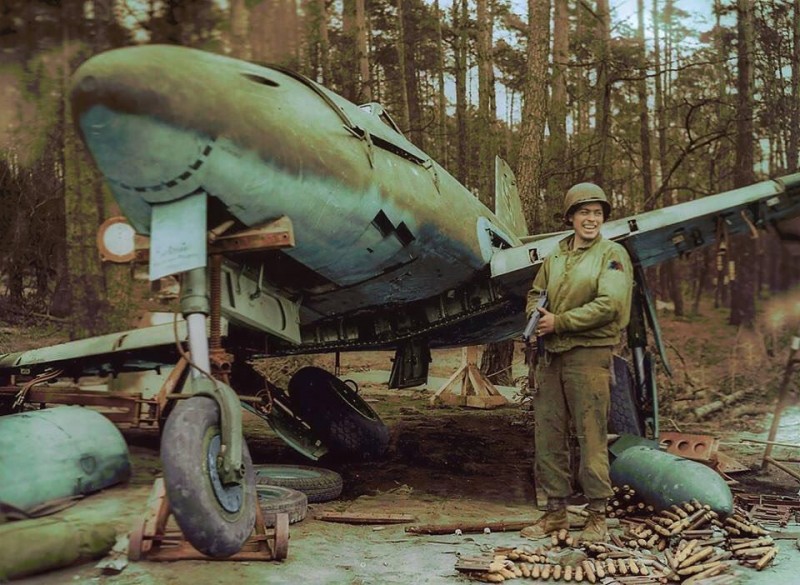
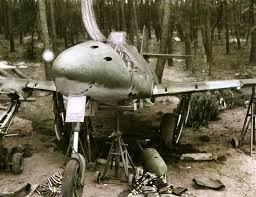
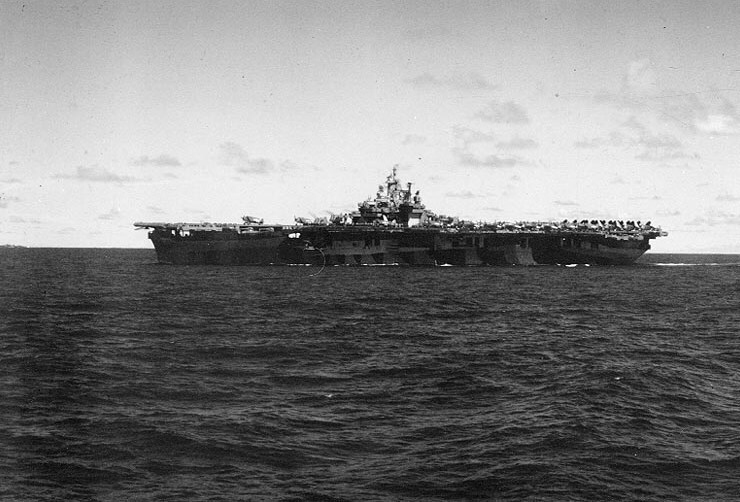
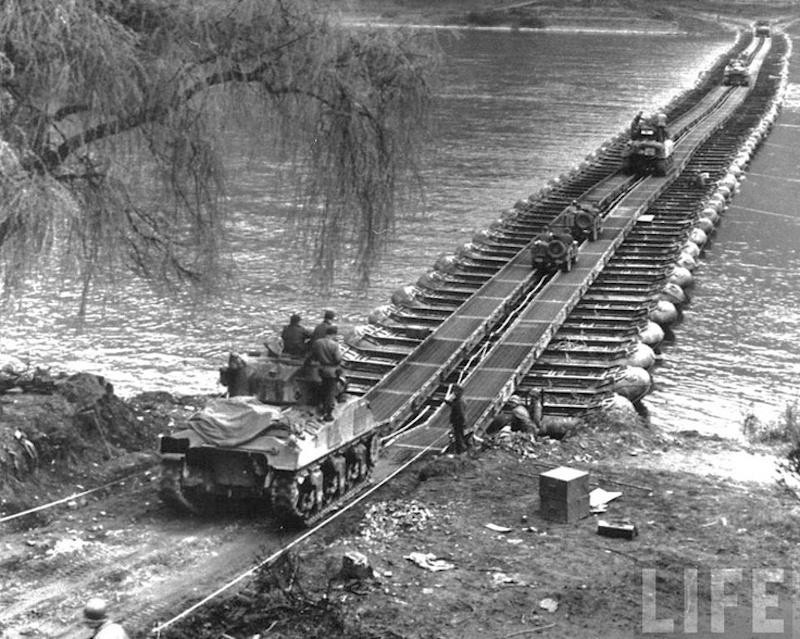
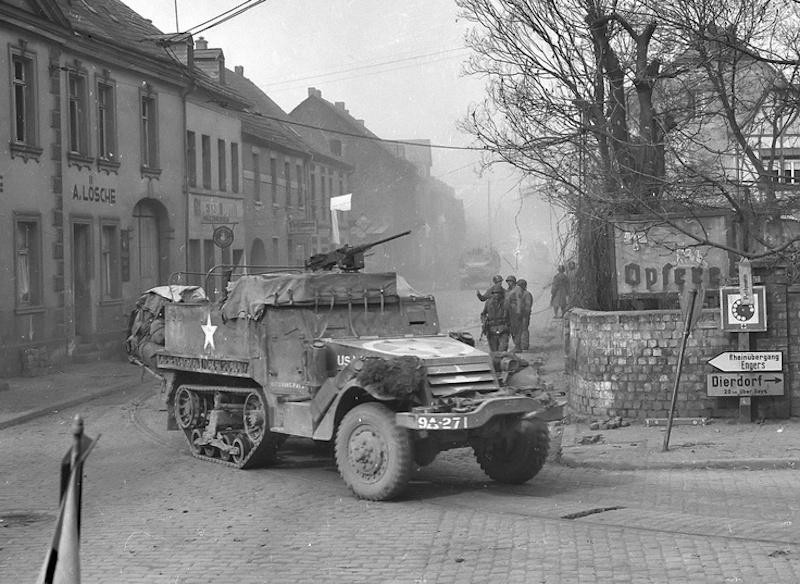

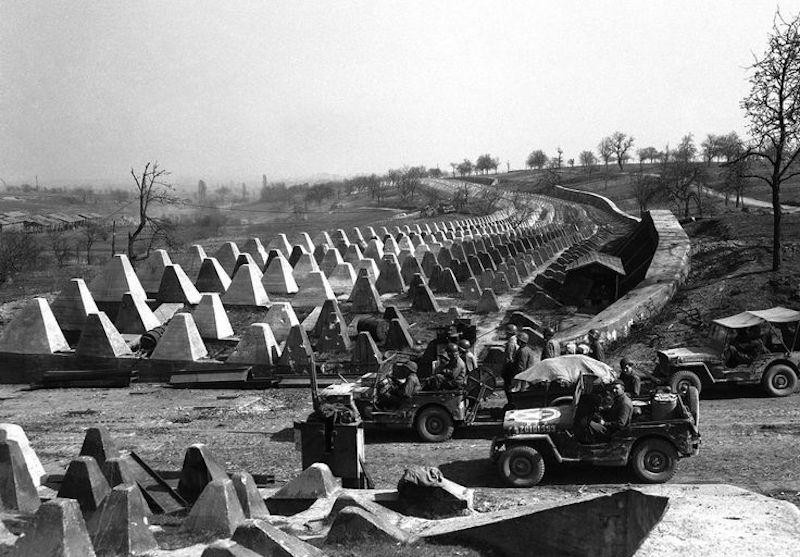
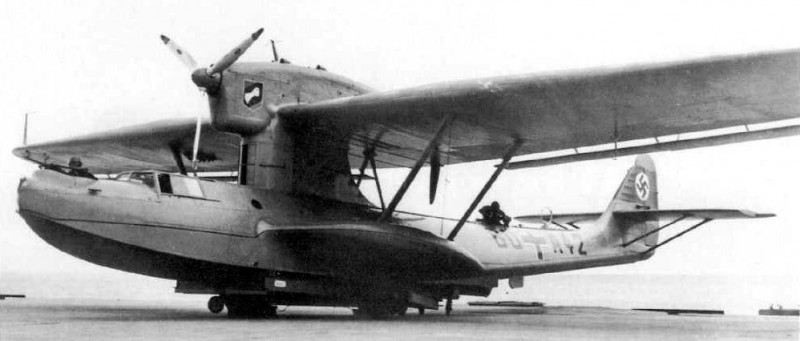
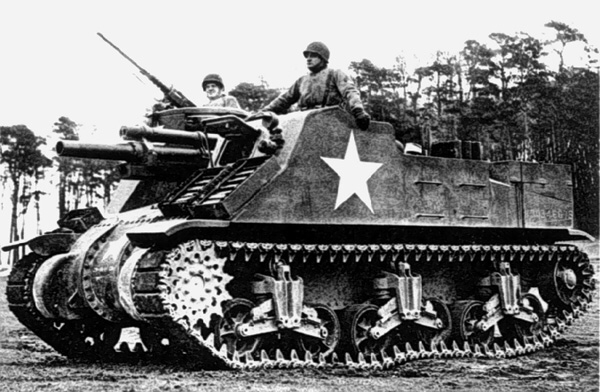
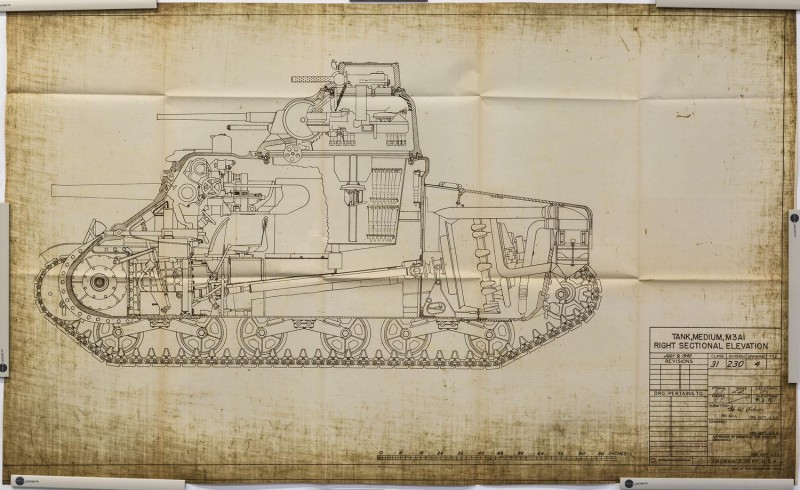
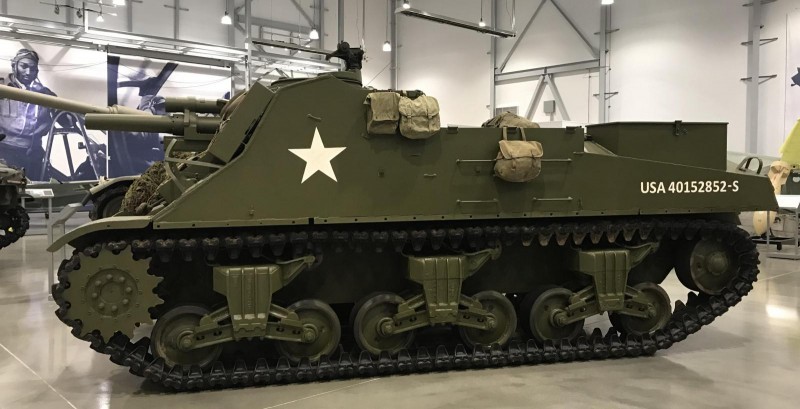

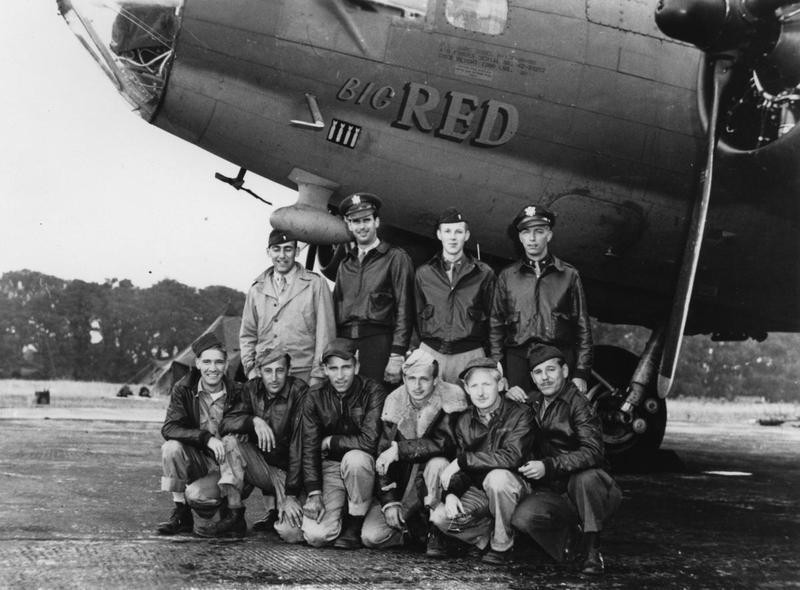
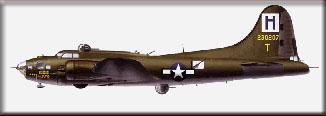

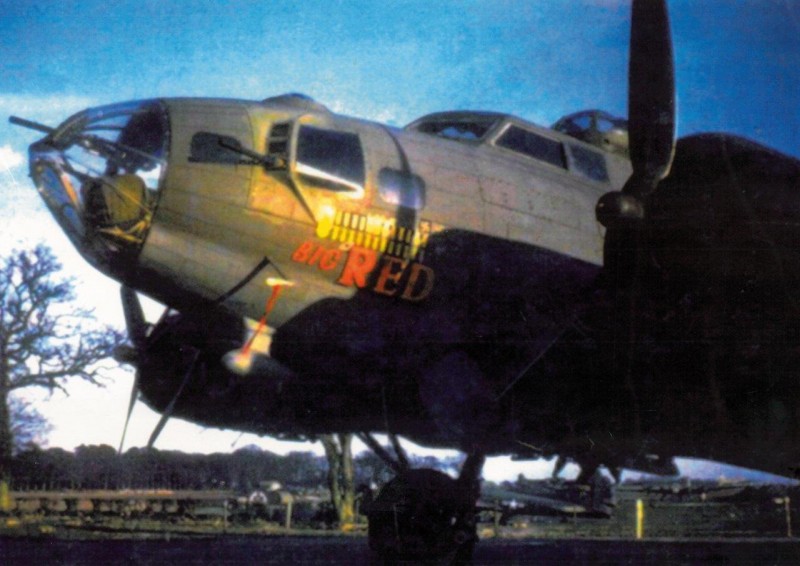
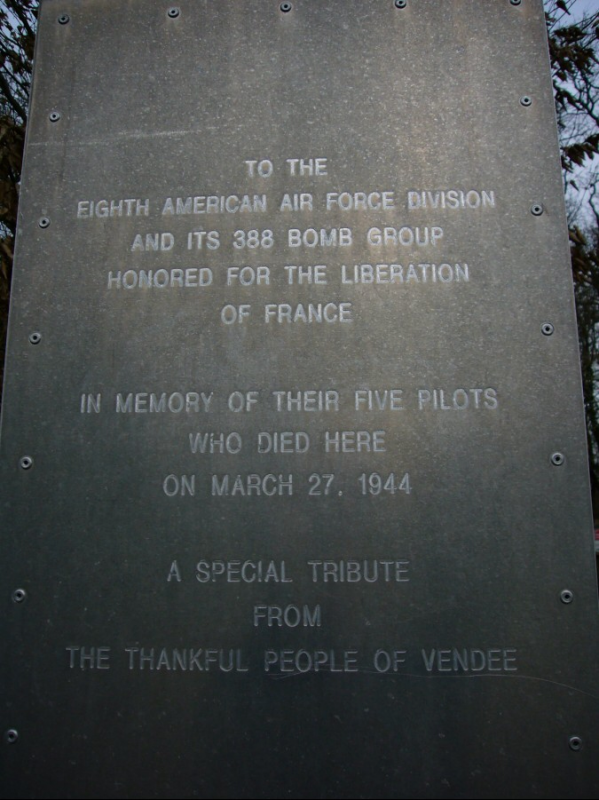
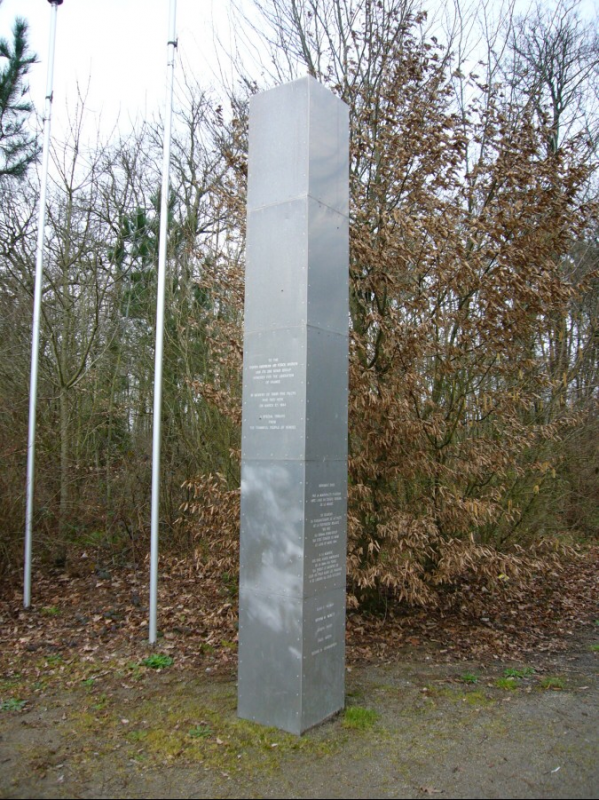


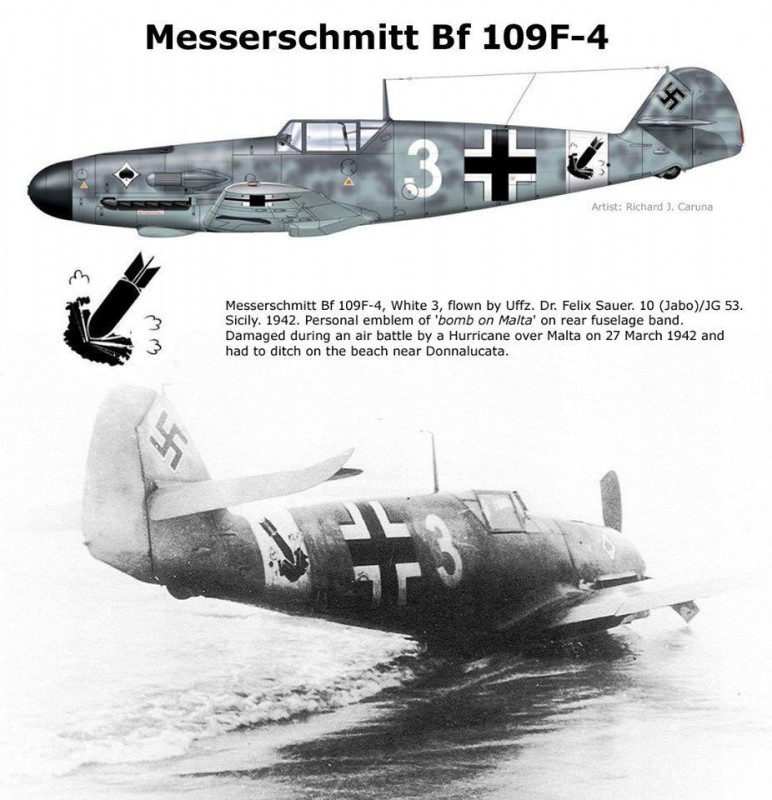
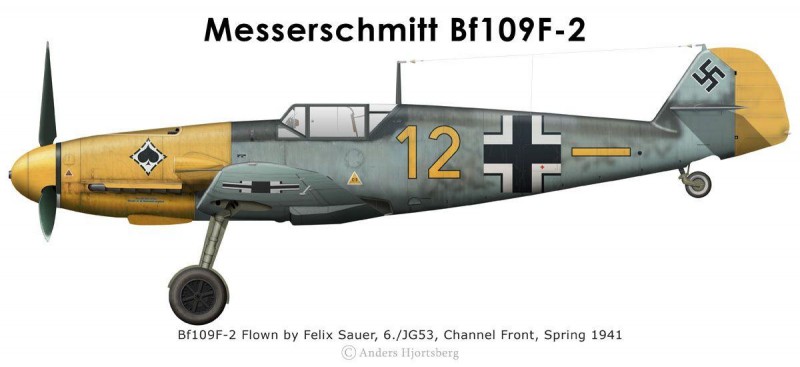

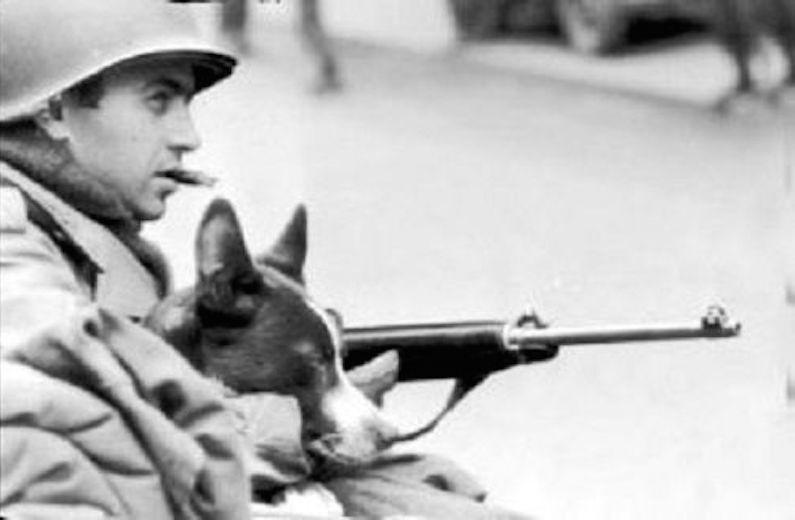

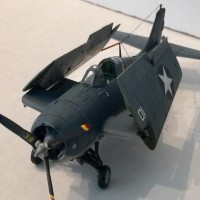
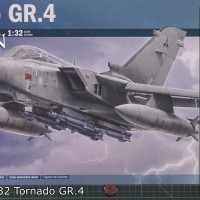
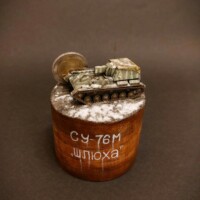
David, almost all photos you selected to present are either good visual aids or simply diorama stuff. The 262 colour photos do both functions if you ask me. I have a few jacks exactly like the one depicted in those colour photos and it sure surprised me seeing it looks like a red brown or also possibly a rather grim and rusted tool. I might use one of those jacks painted like this one soon Cheers
Cheers
Thanks, Pedro. I think the 262 composition would make an amazing 'Dio' - I could well be tempted. Trees, tools, 262, G.I's - all you need is a dog!
Glorious visuals! Thanks for sharing
Thanks, Gavin - much appreciated.
Another nice set, David. It's amazing how long that the Ma Deuce has been around.
Thank you, Robert. That old gun’s been around forever. Design classic.
Fine set of photos and stories as usual! The Me 262 photos would make for an excellent diorama! The story of Big Red again illustrates the dangers faced by airmen in the skies over Nazi-occupied Europe. It took a special kind of person to climb into a heavy bomber and know that you can get killed on any mission. A salute to the GREATEST GENERATION!
Again: an amazing set of pictures; especially those colourized ones; I like it so much!
A salute, indeed, Mourne. Having done a lot of reading over the last six months on this subject, those men of that generation had a unique relationship with death. You hear time and again how there was an imminent expectation and acceptance of dying, but what they feared was being wounded; the reason being jeopardising their comrades safety, pain, not being able to fight, being a ‘liability’.
We don’t see death as something acceptable with the young. To them I think it was a thing you had to learn quickly to make peace with. These days we talk about the ‘hero gene’ as though you either have it or not. For that generation it wasn’t so ‘simple’ - you had to find, to make, a way of doing normally unthinkable things.
Thanks, Michael - glad you enjoyed them. It’s nice to unearth and share these images with people (modelers) who REALLY look at photos.